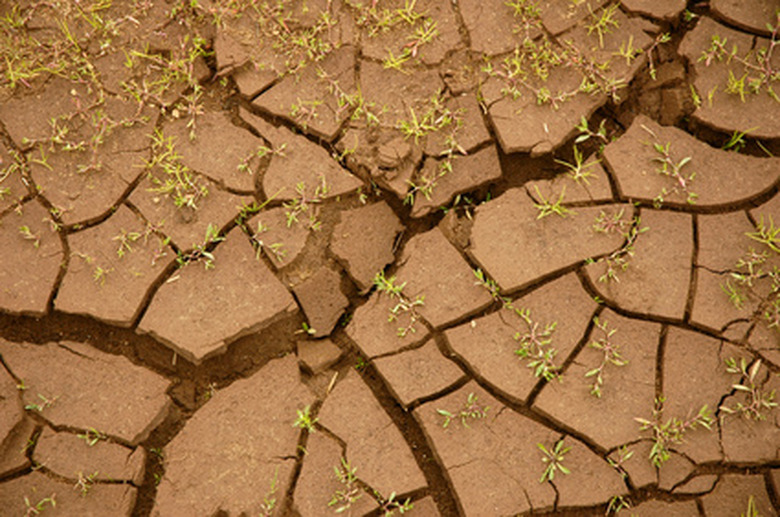Gypsum Vs. Lime For Soil
Both gypsum and lime are used as soil amendments. The usefulness of comparing them is limited because their function is different. Gypsum is added to clay and heavy soils to help them drain and improve their tilth, or ability to be tilled, and to remove salt from saline soils. Lime is added to improve the pH of acidic soils.
Gypsum
Gypsum is hydrated calcium sulfate, CaSO4·2H2O, that comes in the form of flattened crystals. It is mined from geologic deposits and produced artificially as a by-product of devices used to control pollution in coal-fired power plants. It is also used to make chalk, plaster of Paris and drywall for building construction.
- Both gypsum and lime are used as soil amendments.
- Gypsum is added to clay and heavy soils to help them drain and improve their tilth, or ability to be tilled, and to remove salt from saline soils.
Benefits of Gypsum
Gypsum is added to heavy clay soil to improve its ability to drain and to improve its texture for easier cultivation. Gypsum makes clay soils less compact and hard and better able to accept air and nutrients that plants need. Gypsum also removes sodium from salty soils and replaces it with calcium. Gypsum does not affect soil pH or fertility. It is not useful to amend any soil type other than heavy clay.
Soil pH
To appreciate the usefulness of lime, it is necessary to understand soil pH. Soil pH measures the potential of the hydrogen ion in water; an ion is an atom or molecule with a positive or negative charge. The pH scale of 1 to 14 is a logarithm; a soil with a pH of 5 has 10 times as much active hydrogen as pH 6 soil. A soil with pH 7 is neutral; soils below 7 are acidic; soils above 7 are alkaline.
- Gypsum is added to heavy clay soil to improve its ability to drain and to improve its texture for easier cultivation.
- Gypsum also removes sodium from salty soils and replaces it with calcium.
The availability to plants of potassium, phosphorous, calcium and magnesium decreases in acidic soils; at the same time the availability of aluminum, copper, iron, manganese and zinc increases.
Alkaline soils, those with a pH above 7 sometimes have too much salt and lack iron, manganese and zinc.
Too much aluminum or manganese is toxic to plants. Deficiencies of iron, manganese and zinc can adversely affect the health of plants.
Most plants prefer a soil pH of 6 to 7 although there are plants that like acidic soils.
Types of Lime
Two kinds of lime, CaO, are ordinarily used to raise the pH of soil. Calcitic limestone is largely calcium carbonate, CaCO2. Dolomitic limestone, made from rocks containing magnesium carbonates and calcium, must be at least 6 percent magnesium. Since ground limestone is dusty and difficult to spread, lime is usually marketed in granules.
- The availability to plants of potassium, phosphorous, calcium and magnesium decreases in acidic soils; at the same time the availability of aluminum, copper, iron, manganese and zinc increases.
- Dolomitic limestone, made from rocks containing magnesium carbonates and calcium, must be at least 6 percent magnesium.
Adding Lime
The amount of lime needed to raise soil pH depends on two factors. The more acidic a soil is, the more lime is usually required. The amount of lime needed also depends on the soil's buffering capacity, its ability to have its pH increased. Testing kits are available at gardening centers to determine soil pH. Check with your local agricultural extension service to find out how to have your soil tested for its buffering capacity.
